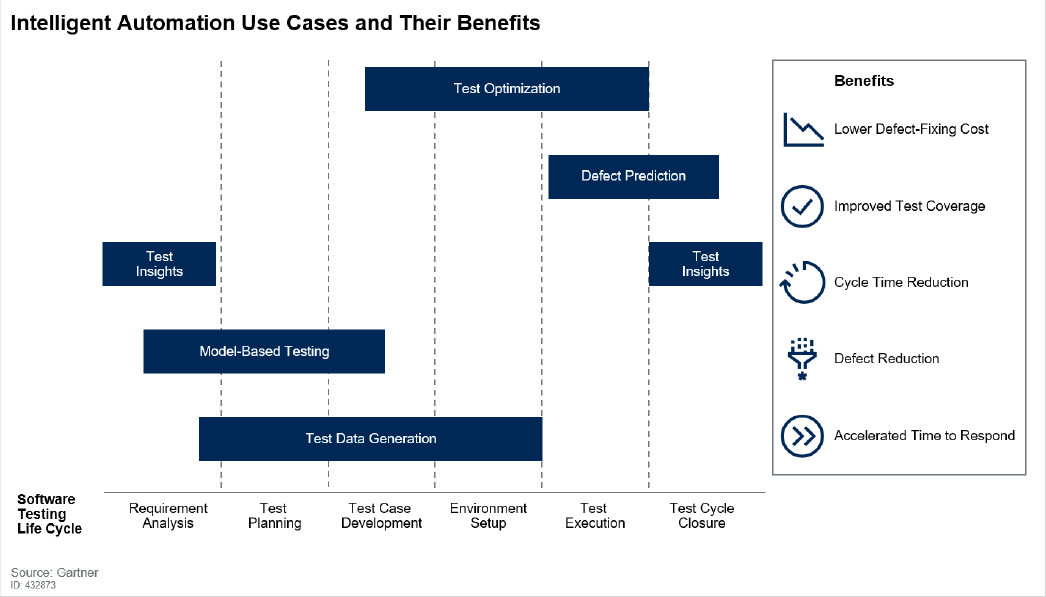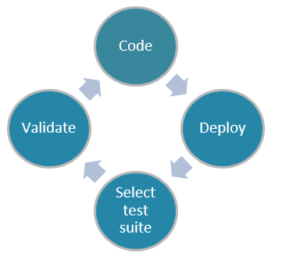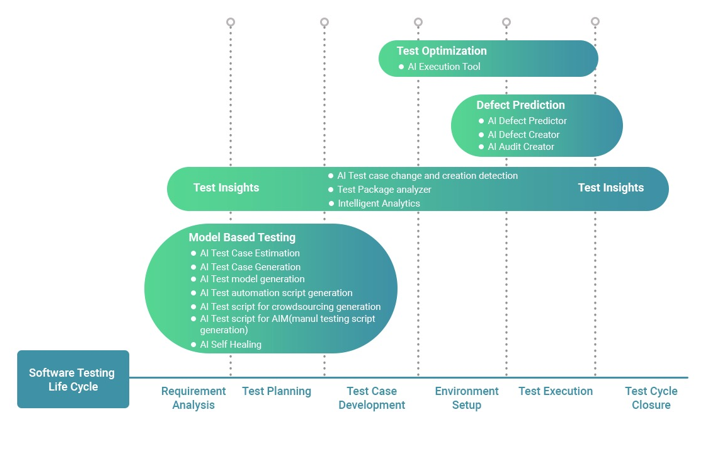
Imagine having the ability to self evolve and heal whenever there is an impediment – helping you to adapt to the change and also increase efficiency and productivity. When the key differentiator to any business in this competitive digital era is achieving end-user satisfaction, delivering “quality-at-speed” plays a crucial role in achieving it. In the last few years, there has been a conscious effort in the world of software testing to translate the manual test cases to automated testing to achieve Quality-at-Speed, lower the risk factor and improve the test coverage.
With the advent of automation, manually intensive tasks are being executed faster with reduced human errors. Test Automation is a method in software testing that leverages automation tools to control the execution of tests. Test automation is also called automated testing or automated QA testing. Ultimately, Automation tools are best suited for tasks, processes and workflows that have repeatable, predictable interactions with other IT applications.
The value of Automation in today’s world is far greater than ever. It may have started with a goal to reduce the costs for repetitive tasks. However, automating just to reduce cost is not what automation is all about. In fact, the journey gets all the more exciting with disruptive technologies like Artificial Intelligence and Machine Learning, which take automation to the next level!
Unlike Automation, which is designed to automate routine, repetitive tasks, intelligent automation goes a step further and provides the capability to automate non-routine tasks by leveraging AI and ML to redefine the ways of Software Testing and solve complex problems.
Intelligent Automation is a layer on top of the normal automation that fixes most of the problems in automation, helps reduce human work and gain new capabilities beyond human abilities.

To gain a clear overview of the key differences, let’s compare the two terms on key parameters:
| Parameters | Automation | Intelligent Automation |
| Technology and Focus on process | Automation is process-driven. Focuses on automating repetitive and, rule-based processes | IA is all about data-driven processes, Incorporates artificial intelligence (AI) and Machine learning (ML) technologies |
| Test case generation and maintenance | Test Automation cases are high maintenance and are not reusable resulting in higher maintenance costs and lower test case generation efficiency | Uses Model based testing. TDD/BDD approach is used and the test cases are generated and maintained automatically resulting in reduced maintenance cost |
| Ability of self evolve | Follows rules to automate the tasks that has no variations, is restricted to repetitive tasks | Learns and adapts to data in real-time with the self-healing capability . |
Now that we are clear on the key differences, let’s explore the use cases for Intelligent Automation in Testing services.

In “Predicts 2018: Application Development,” Gartner forecast that applying AI and machine learning to quality assurance (QA) will help identify how AI technologies can support new ways of working in DevOps, mobile and IoT environments. By 2022, 40% of application development (AD) projects will use AI-enabled test set optimizers that build, maintain, run and optimize test assets
Gartner recommends that organizations should Increase application testing agility by working with application leaders to explore IA use cases, such as test optimization, defect prediction, model-based testing, test data generation and test insights.

Explore Speed, scalability and predictability with Webomates Testing-as-a-service patented AI testing platform. With this platform, we are at the forefront of Intelligent Automation.

Webomates thus helps the teams deliver higher quality releases while saving thousands of hours removing roadblocks and drag on productivity.
In a Snapshot – The Webomates’ AI Impact
14 AI Engines
5 Patents Granted
5 Patents Pending

There are 14 AI tools that are used in the entire life cycle right from test case estimation, test case generation and test model generation to reduce the overall set up time from months to weeks and optimize application testing for quality and speed using Intelligent Automation. We help to accelerate value to customers by empowering the QA teams with such real-time self-healing capabilities using the new-age intelligent technologies and help in realizing the true business value and also empower the organizations in providing value to the customer.
The power combination of Webomates AI and ML powered Testing along with Shift-left testing approach is bringing a revolutionary change in the testing era to create a more focused application development.
To maximize the benefits, Webomates CQ believes that following a formal quality assurance process is imperative for a successful release. This gives organizations the capability to focus more on the business value and customer experience.
Our QA team embeds intelligent automation and continuous testing principles right across the software delivery pipeline. With a perfect blend of Agile, DevOps, patented AI Defect Predictor tool and a test automation framework, Webomates can help you achieve a hassle-free release, every time!
Tags: Artificial Intelligence, Automation Testing, Intelligent Analytics, IntelligentAnalytics
Test Smarter, Not Harder: Get Your Free Trial Today!
Start Free Trial
Leave a Reply